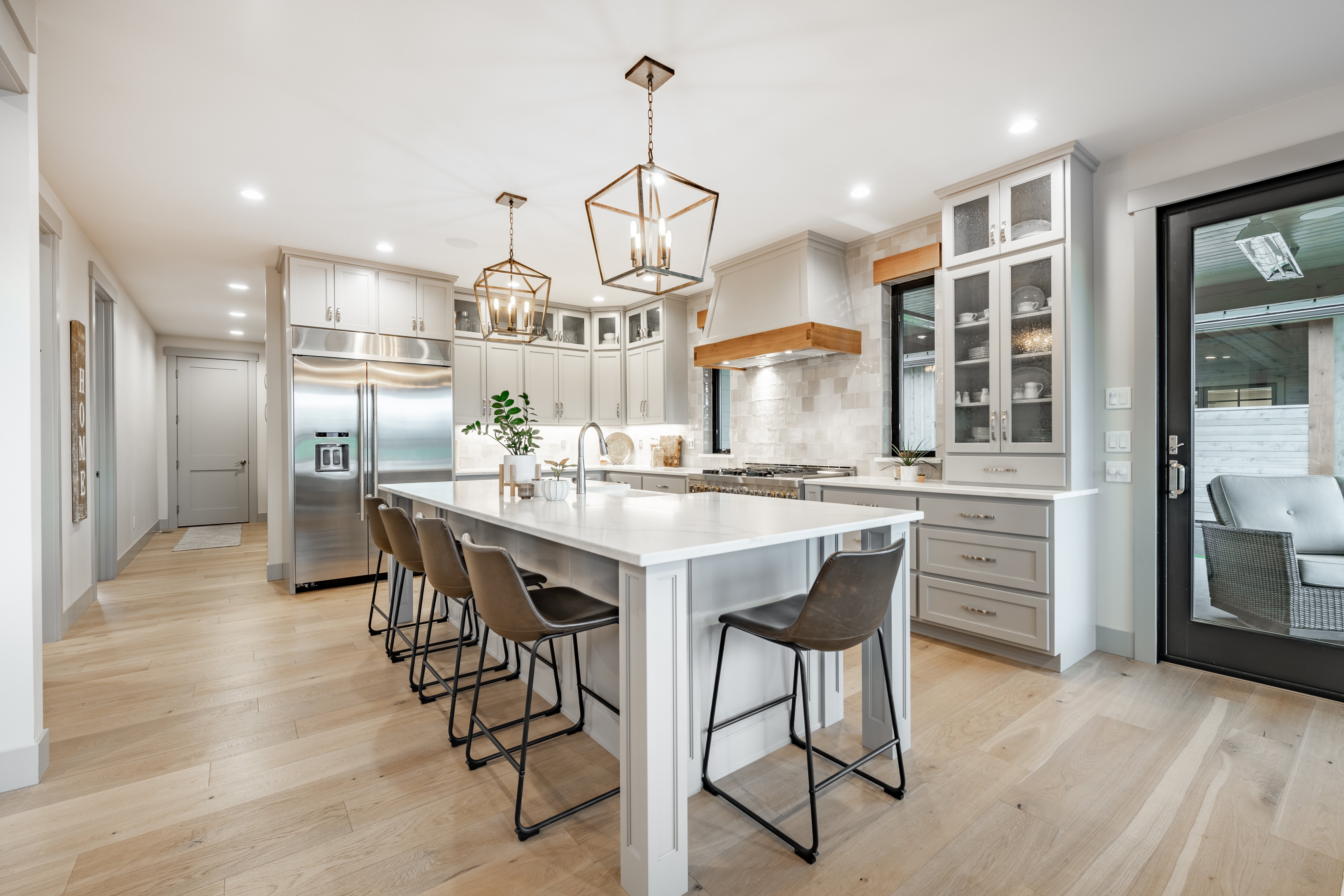Aesthetic vs. Efficient Remodeling Options: Why Not Do Both?
published on january 17, 2014

In This Article
According to a survey by the National Association of Realtors, 53 percent of homeowners start a remodeling project within three months of moving into a new house. Remodeling offers immediate as well as long-term benefits to homeowners, allowing you to enjoy the upgrades now and while potentially adding to the resale value of your home. Homeowners must often choose between remodeling options in order to remain within their budgets, such as choosing between aesthetic improvements and energy-efficient upgrades. However, with some careful planning, you might not have to sacrifice some of your goals to achieve others.
Divergent Thinking
Though many homeowners say that they would like to make energy-saving improvements to their homes, when the time comes to start a project, these aspirations often fall by the wayside. The most popular home improvements in 2013 were kitchen and bath remodeling projects.

These perennial favorites remain top remodeling targets, in part, because homeowners believe they will add to resale value. In a survey conducted by Shelton Group, researchers found that homeowners consistently favored kitchen and bath renovations when given a hypothetical budget. This discovery conflicts with responders' initial positive responses regarding energy-saving improvements and findings by the National Association of Homebuilders. In fact, 26 percent of homeowners in the Shelton Group survey said they prioritized energy-efficient improvements and yet did not support the claim when given a hypothetical budget for remodeling.
Homeowners’ most consistent responses revealed that they preferred to spend their money on projects that increased the aesthetic appeal of the home. This included the popular kitchen and bath projects, along with window replacement.
"Most homebuyers expect to make improvements, but they want to spend their money on 'sexy' improvements like paint and new countertops," Suzanne Shelton, president and CEO of Shelton Group, said.
Why the Discrepancy?
Energy-efficient changes save homeowners money in the long run, so why do many choose to prioritize other projects? Upfront costs are one concern that Americans face. Some energy-efficient renovations require a significant initial investment, and homeowners don't want to wait to recoup the costs through lower utility bills. The Shelton Group survey found that 44 percent of homeowners claimed they had other projects that needed to be completed first while 9 percent admitted that they did not want to replace functioning appliances.
Aesthetic and Efficient: Best of Both Worlds
The Shelton Group survey showcases a mindset that many Americans have adopted: most respondents believe that aesthetic remodeling projects and energy-efficient renovations are mutually exclusive. However, that's not necessarily the case. Upgrading the home to be both energy efficient and beautiful is possible; homeowners just have to design their projects wisely. While new countertops and hardwood floors are certainly visually appealing, energy efficiency has its own attractive quality, the most obvious being the reduction of utility bills.
New windows are a great way to create beautiful spaces—to live in and to appeal to future buyers—while making strides in energy conservation.

With the multitude of options in both design and energy-efficient windows, homeowners can achieve their architectural and aesthetic goals while optimizing natural lighting and reducing thermal loss. Considering that heating and cooling cost make up more than half of a home’s utility costs and that the average home can lose up to 30 percent of its heating and air conditioning energy through the windows, energy-efficient windows can be a wise investment.
Perhaps the easiest way to reduce energy use—while still getting that kitchen of your dreams--is by choosing energy efficient appliances. And, this is one area in which consumers are starting to combine their desires to improve the value and energy-efficiency of their home. The National Association of Home Builders study found that most Americans prefer to buy Energy Star appliances. In fact, 94 percent would love to have approved appliances, 91 percent would like an Energy Star-rated home and 89 percent would like Energy Star windows.
Smart and'Sexy' Improvements
Efficiency doesn’t mean you have to sacrifice comfort. The radiant warmth of heated tile when you step out of the shower can make you feel like you are enjoying a stay at your favorite spa, but radiant heat can reduce your heating costs. Installing floor heating in the rooms you use most allows you to lower the thermostat in the rest of the home, reducing heating costs by as much as 7 percent. Because heating and cooling costs are the largest energy expenditures in the home, cutting costs in those areas can result in substantial savings.
So, go ahead with those plans to remodel your kitchen or bath. By adding energy–efficient options to your design plan, you can enjoy the new space and invest in your home’s value, while making your house beautiful in more ways than one.
Sources:
http://www.finehomebuilding.com/how-to/articles/understanding-energy-efficient-windows.aspx http://energy.gov/public-services/homes/heating-cooling http://sheltoninsights.com/product/energy-pulse http://www.forresidentialpros.com/news/11231999/homeowners-miss-link-between-energy-efficiency-and-home-value http://eyeonhousing.org/2013/02/28/what-do-home-buyers-really-want/ http://www.homeadvisor.com/article.show.Remodeling-for-Energy-Efficiency.15020.html http://www.whgmag.com/98-interiors/1884-top-remodeling-priorities-homeowners-bathroom-kitchen http://www.realtor.org/news-releases/2013/03/buyers-value-storage-space-in-law-suites-nar-survey-finds
Have Questions About Your Project?
Our team of Radiant Experts is ready to help!
Stay Updated
Get the latest radiant heating news and tips delivered to your inbox.


